London Roman Amphitheatre
The City of London was founded on the River Thames. A few clues of the original city can still be found all over the city today like some remnants of Roman walls in the heart of London. Other traces have survived but to see those, you have to go underground.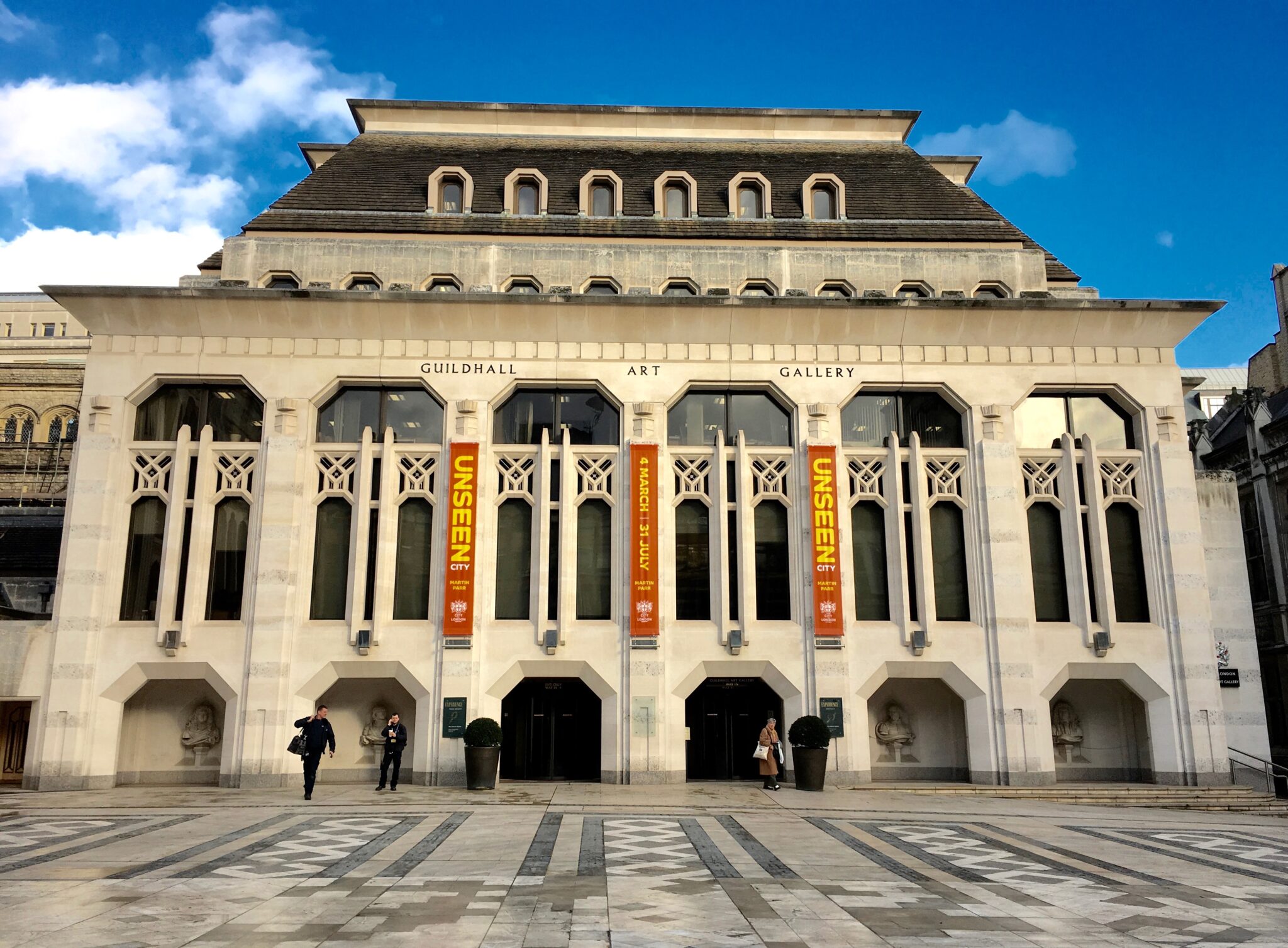 The Guildhall Art Gallery, above picture, is one of my favourite art galleries in London, and hidden away underneath this building is the Roman Amphitheatre. In 1988 construction workers preparing to lay out the foundations for the Guildhall Gallery unexpectedly unearthed a part of London’s past, nearly 2,000 years old history of the city. At first, they didn’t know what it was so a group of archeologists were called in, and they discovered that it was London’s long lost Roman Ampitheatre.
The Guildhall Art Gallery, above picture, is one of my favourite art galleries in London, and hidden away underneath this building is the Roman Amphitheatre. In 1988 construction workers preparing to lay out the foundations for the Guildhall Gallery unexpectedly unearthed a part of London’s past, nearly 2,000 years old history of the city. At first, they didn’t know what it was so a group of archeologists were called in, and they discovered that it was London’s long lost Roman Ampitheatre.
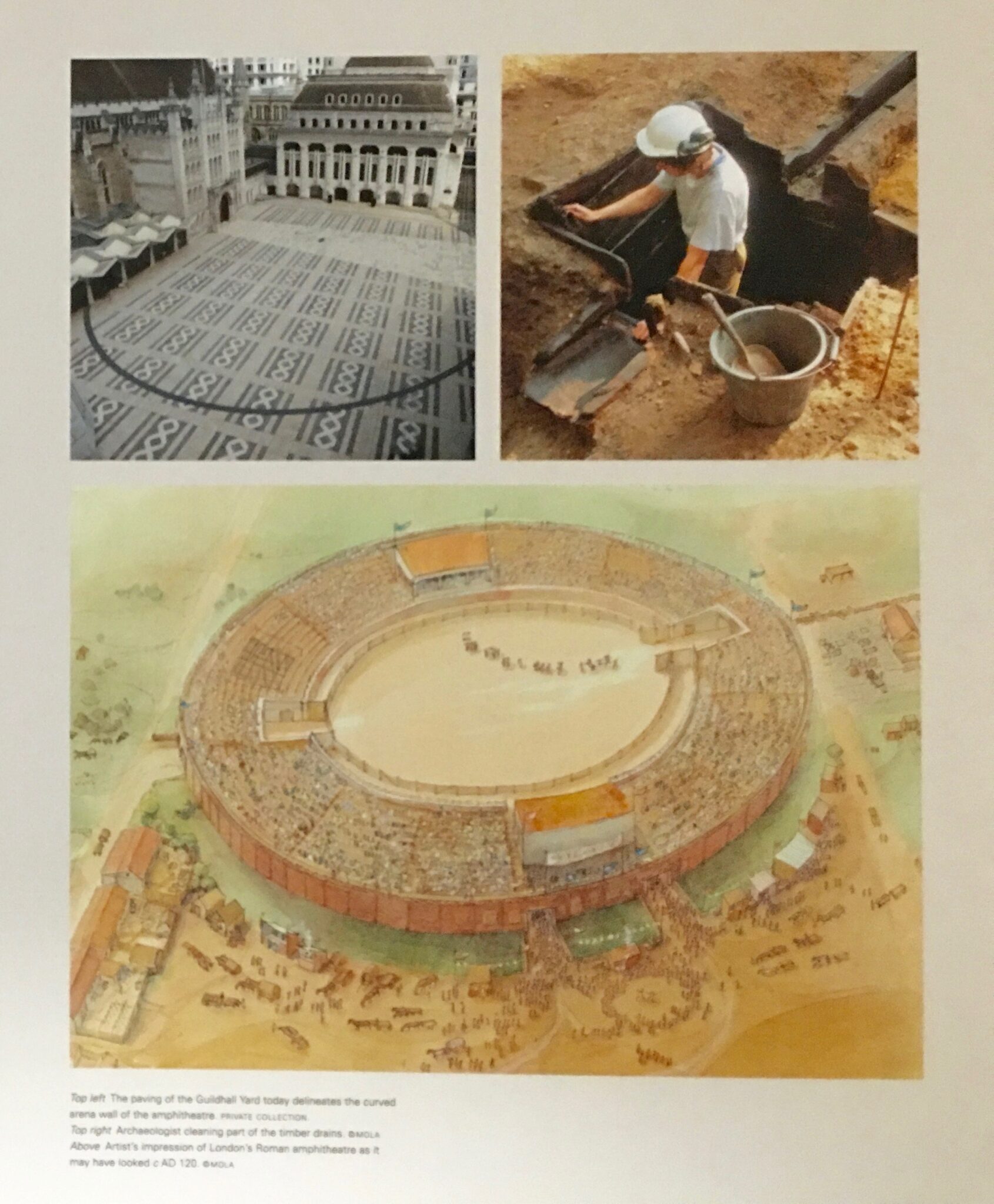 What they uncovered turned out to be the eastern entrance and start of the curving walls of the amphitheatre itself, probably 20-30 metres below the current ground level. It clearly shows how much London has accreted in the last 2000 years.
What they uncovered turned out to be the eastern entrance and start of the curving walls of the amphitheatre itself, probably 20-30 metres below the current ground level. It clearly shows how much London has accreted in the last 2000 years.
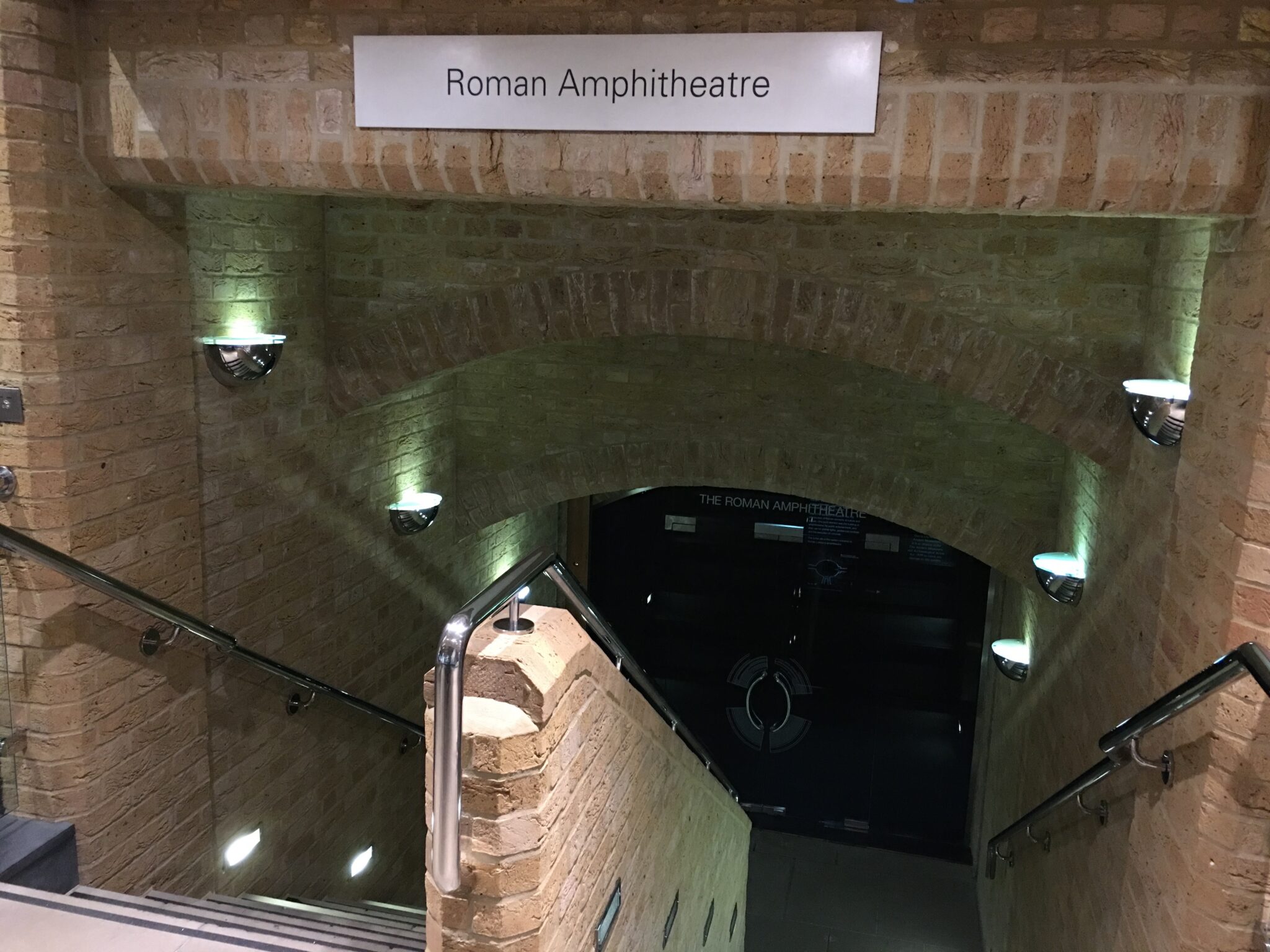
The Corporation of the City of London had concrete plans (architecture, timetable of building construction, etc.) and had to be convinced in the late 80s by various ‘interest groups’ to allow the conservation of the site. Aside from the pressure from English Heritage, there was recommendations based on the Planning Policy Guidance 16 commonly abbreviated as ‘PPG 16’ (a document produced by the UK Government to advise local planning authorities in England and Wales on the treatment of archaeology), and it resulted in the plans for the Guildhall Gallery being altered just to conserve the amphitheatre. It took years for the Corporation of the City of London to finally allow the Museum of London to excavate the remains and conserve them in its original place in the basement. The building and conservation works were completed in 2003, and the London Roman Amphitheatre finally opened to the public 16 years after the archeological site was discovered.
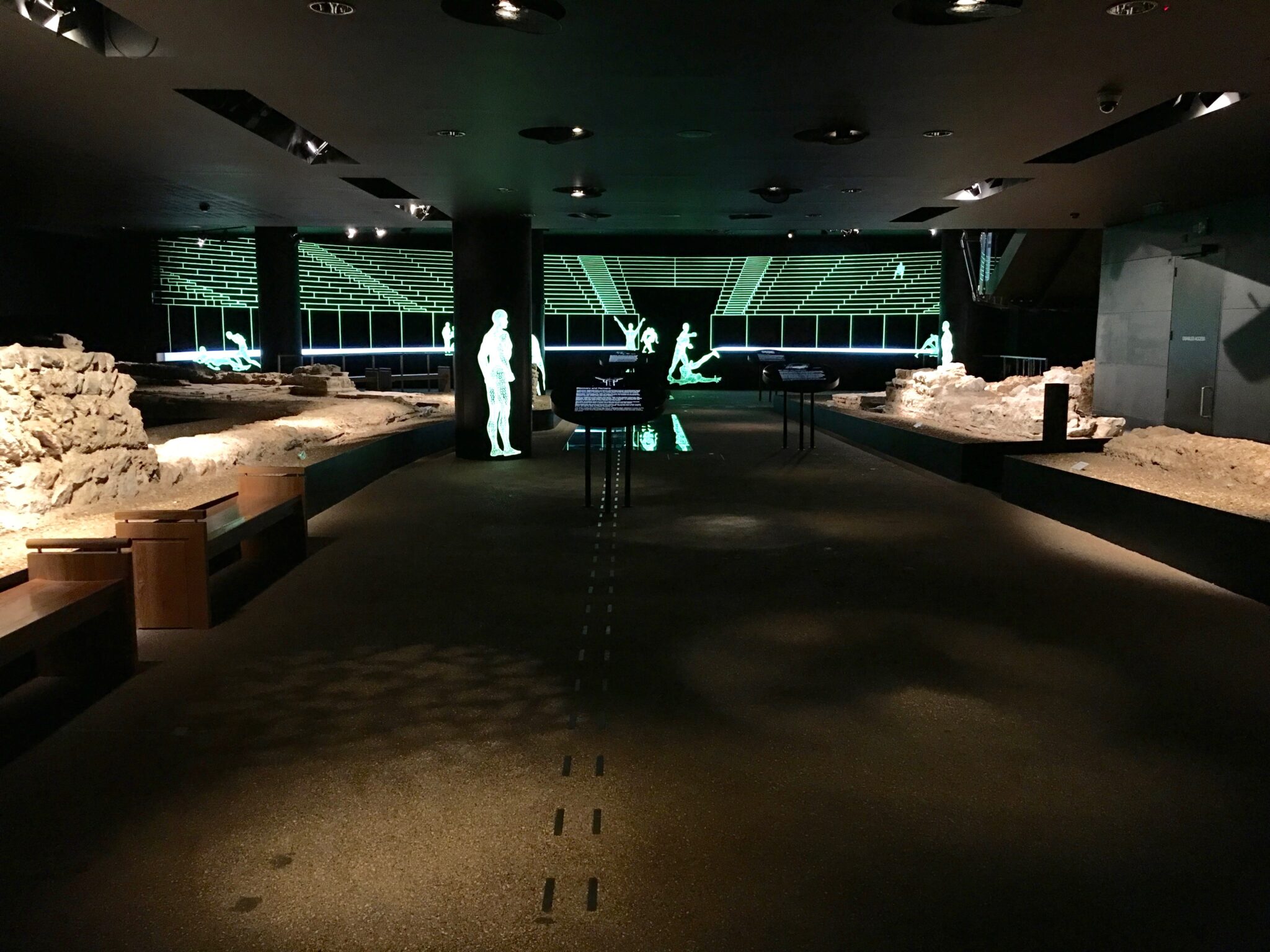 It’s quite amazing to see how any of the remains survived given the long history. The amphitheatre was believed to have been built in AD 70 and was abandoned around AD 400. (The Romans invaded Britain in AD 43, and what we now refer to as the ‘City of London’ was then called ‘Londinium’ by the Romans, and it was burned down in AD 61 by Queen Boudica and was rebuilt by the Romans in 100 AD – I love this part of London’s history and it’s a dozen tale for another day.) When the Roman empire collapsed the amphitheatre was simply lost in time.
It’s quite amazing to see how any of the remains survived given the long history. The amphitheatre was believed to have been built in AD 70 and was abandoned around AD 400. (The Romans invaded Britain in AD 43, and what we now refer to as the ‘City of London’ was then called ‘Londinium’ by the Romans, and it was burned down in AD 61 by Queen Boudica and was rebuilt by the Romans in 100 AD – I love this part of London’s history and it’s a dozen tale for another day.) When the Roman empire collapsed the amphitheatre was simply lost in time.
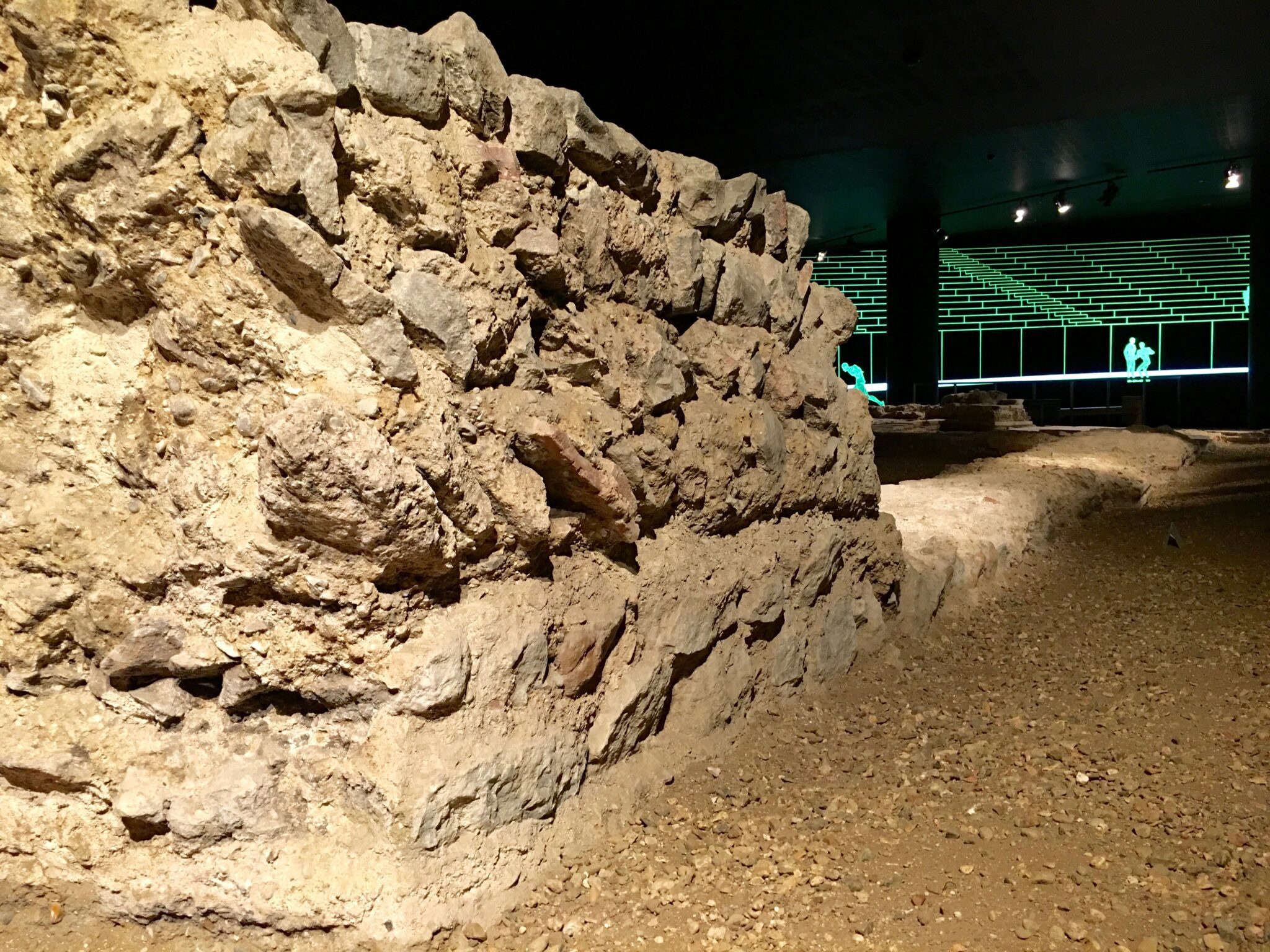 The remains of the walls are all intact, and I could hardly believe that changes in land use and ground level, rummaging of building materials, constructions over the top and around the area, two world wars and other factors did not completely destroy this place. The archeologists who have tirelessly worked to preserve this area have estimated that the amphitheatre could hold an audience of about 6,000 spectators at a time when presumably the population of Londinium may only have numbered between 20,000 and 30,000.
The remains of the walls are all intact, and I could hardly believe that changes in land use and ground level, rummaging of building materials, constructions over the top and around the area, two world wars and other factors did not completely destroy this place. The archeologists who have tirelessly worked to preserve this area have estimated that the amphitheatre could hold an audience of about 6,000 spectators at a time when presumably the population of Londinium may only have numbered between 20,000 and 30,000.
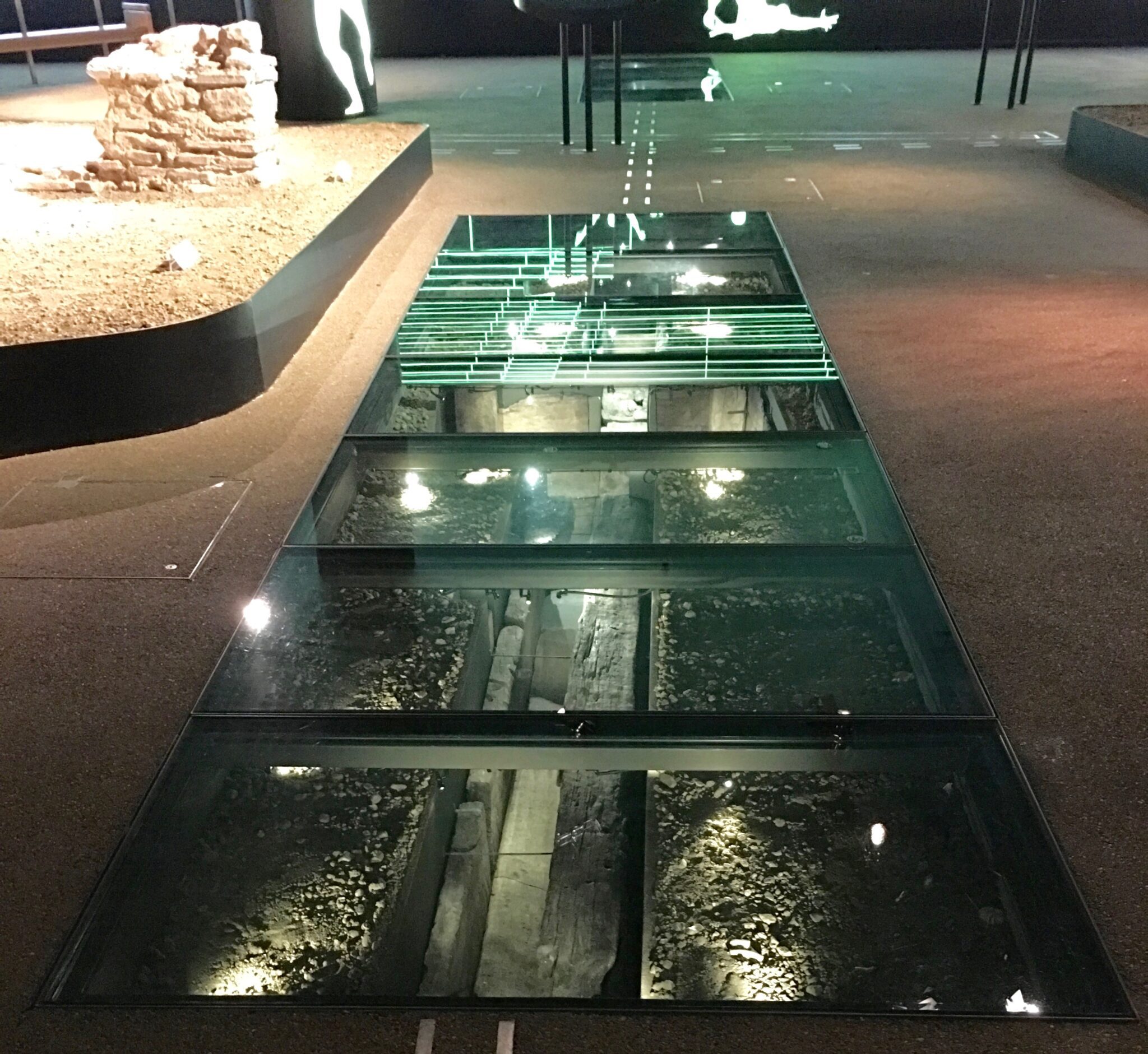 The most fascinating, and in my humble opinion, the best feature of the amphitheatre is the original drains made from timber and stone, under glass set in the floor (above picture). They do look like they’d still work. The design of the site display was obviously given a very careful consideration since the archaeological remains are located underground, in an art gallery. The wooden remains of a box drain have been conserved and covered with glass for the visitors to marvel, as the next picture shows.
The most fascinating, and in my humble opinion, the best feature of the amphitheatre is the original drains made from timber and stone, under glass set in the floor (above picture). They do look like they’d still work. The design of the site display was obviously given a very careful consideration since the archaeological remains are located underground, in an art gallery. The wooden remains of a box drain have been conserved and covered with glass for the visitors to marvel, as the next picture shows.
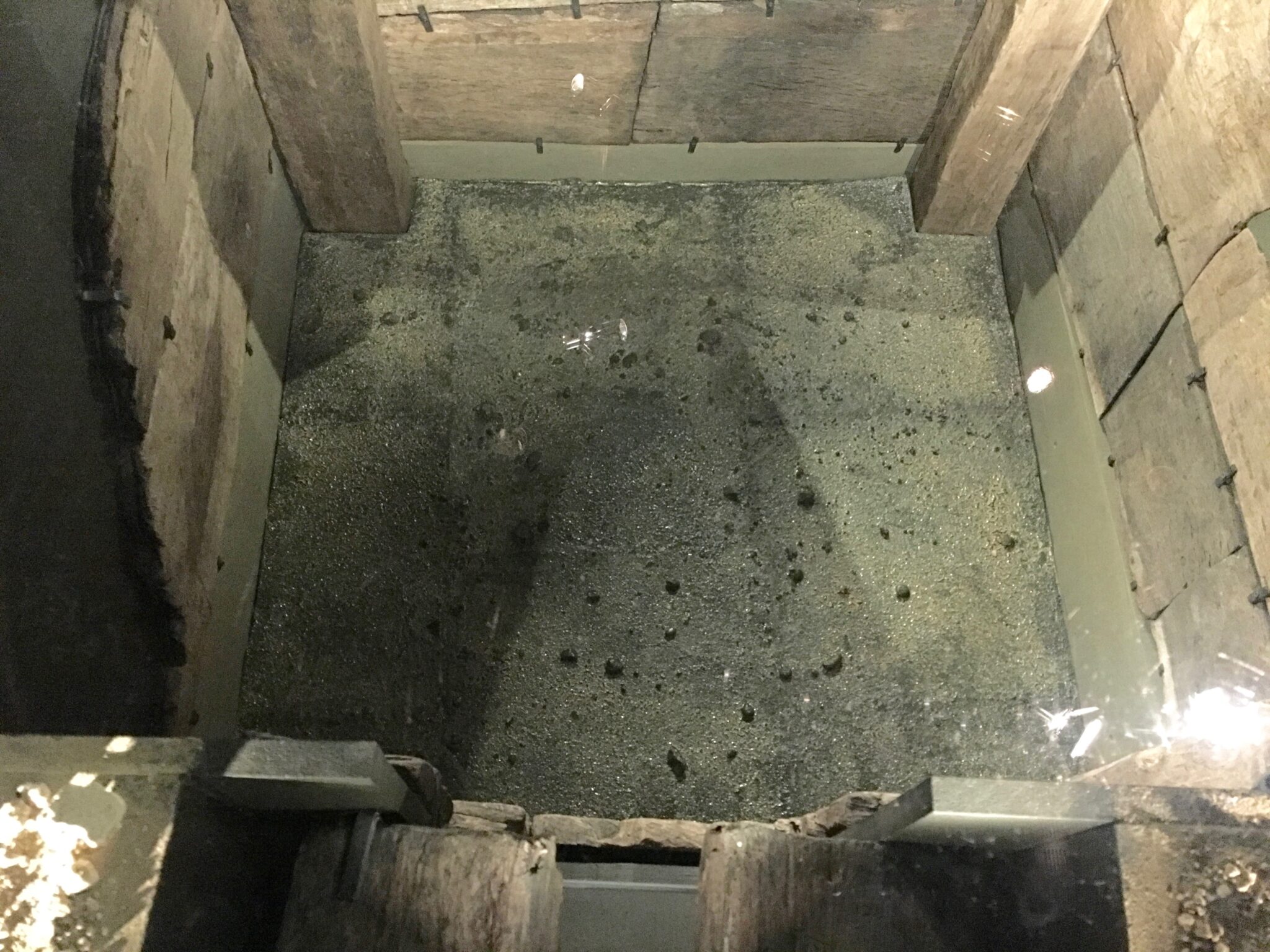 The iPhone pictures don’t do it any justice at all. It’s nothing like the Colosseum in Rome or other amphitheatres in Italy, but the fact that this is located in London, and is underground, does indeed make it even more intriguing and extra special.
The iPhone pictures don’t do it any justice at all. It’s nothing like the Colosseum in Rome or other amphitheatres in Italy, but the fact that this is located in London, and is underground, does indeed make it even more intriguing and extra special.
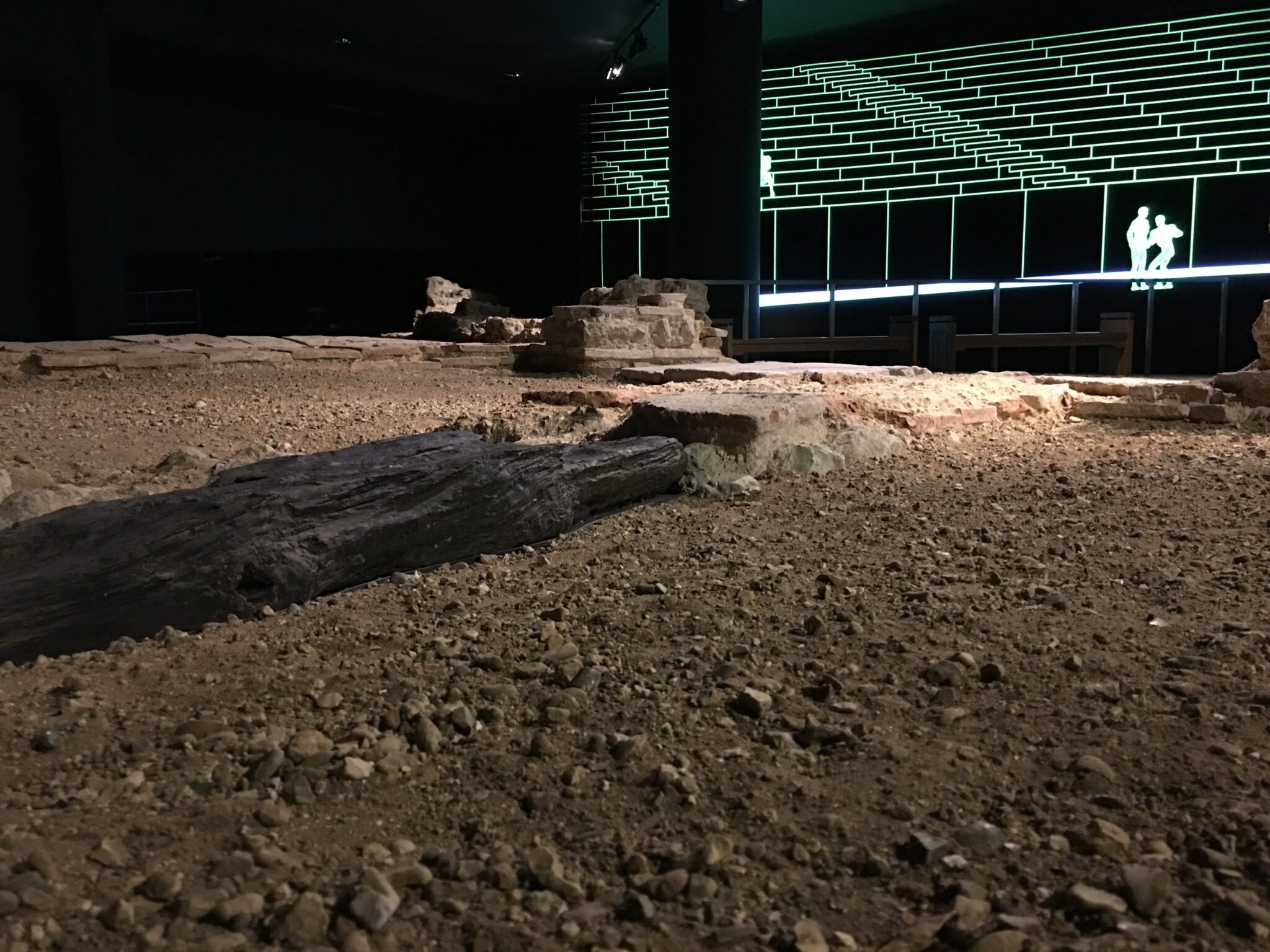 Despite those outlandish male figures that have been simulated using bright green luminous lines, perhaps to give it a more artistic impression, which can sometimes detract from the effect, the whole place still retains its mystery.
Despite those outlandish male figures that have been simulated using bright green luminous lines, perhaps to give it a more artistic impression, which can sometimes detract from the effect, the whole place still retains its mystery.
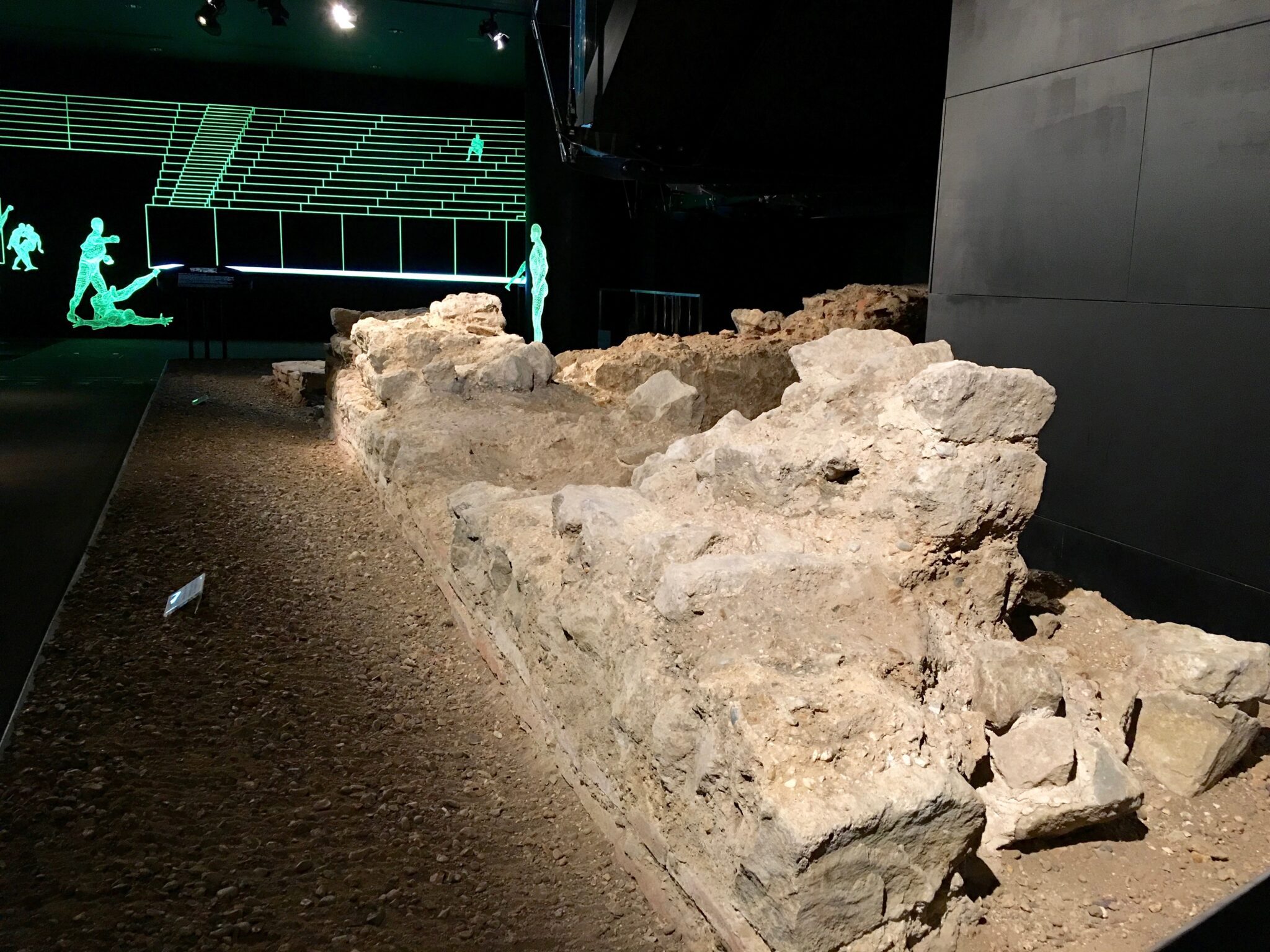 While visiting this place, I was reminded how brutal Roman society was; everyone was either brutal or being brutalised, and it was part of everyday society. The celebrities of the day are the gladiators, and the gladiatorial fight is the biggest entertainment of the day. For those who were coming to the arena, it’s unimaginable how horrible it must have been not knowing if you’re gonna come out dead or alive.
While visiting this place, I was reminded how brutal Roman society was; everyone was either brutal or being brutalised, and it was part of everyday society. The celebrities of the day are the gladiators, and the gladiatorial fight is the biggest entertainment of the day. For those who were coming to the arena, it’s unimaginable how horrible it must have been not knowing if you’re gonna come out dead or alive.

Among the ruins, archeologists found some objects that give us insights into the fears of the fighters/gladiators. There is a figurine of Minerva, the goddess of defence, it may well have been a lucky charm carried by the gladiator as he enters into the deadly combat. I can only imagine that lot of people must have died in this amphitheatre.
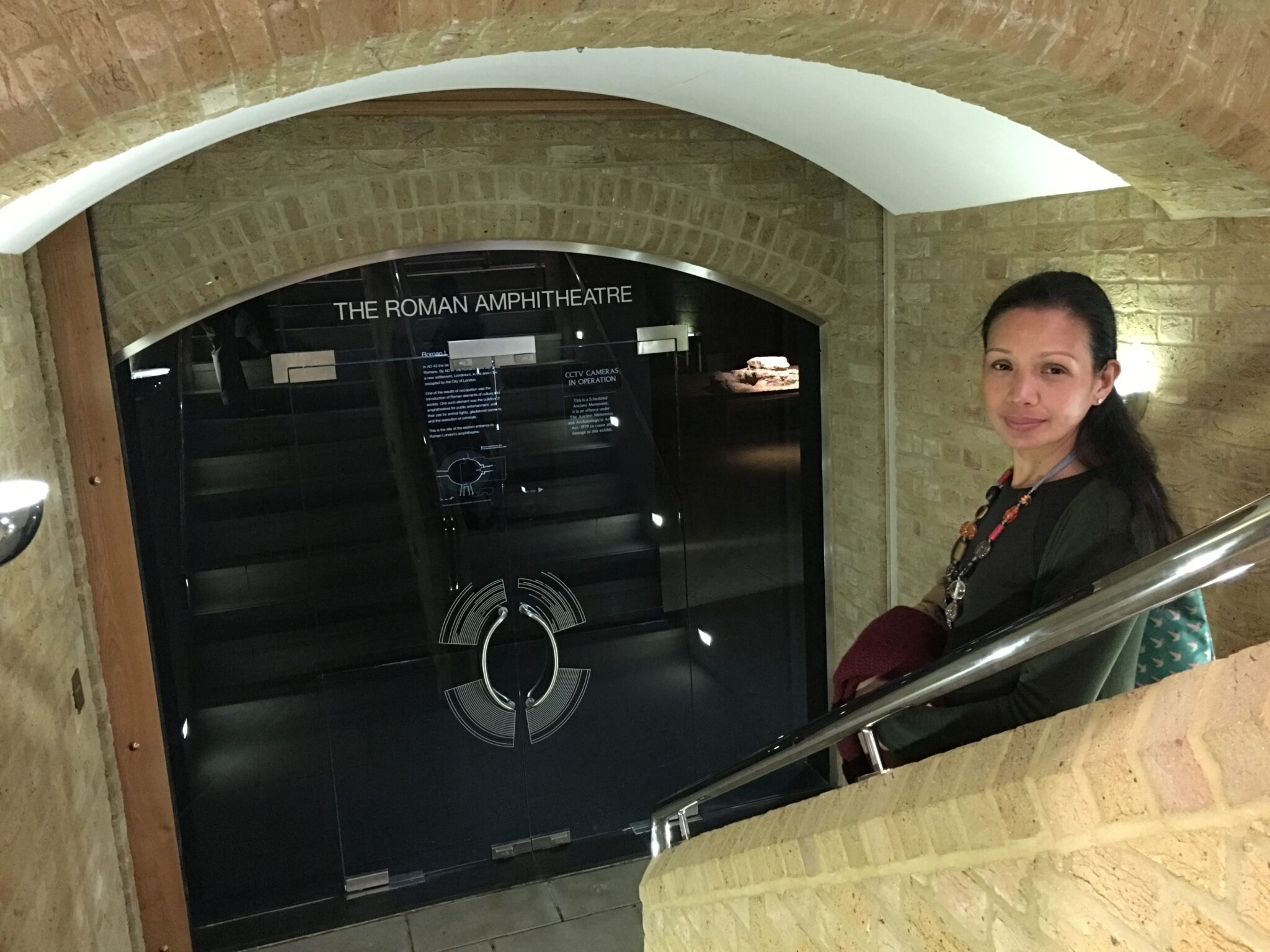 If you’re like me, you might not believe unless you see it for yourself, that indeed once upon a time London hosted gladiatorial combats in its very own amphitheatre. This place certainly gives us a glimpse of nearly 2,000 years old history of the city, and there’s nothing quite like it anywhere in London. It’s pretty interesting and a really cool place to visit.
If you’re like me, you might not believe unless you see it for yourself, that indeed once upon a time London hosted gladiatorial combats in its very own amphitheatre. This place certainly gives us a glimpse of nearly 2,000 years old history of the city, and there’s nothing quite like it anywhere in London. It’s pretty interesting and a really cool place to visit.